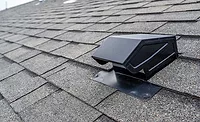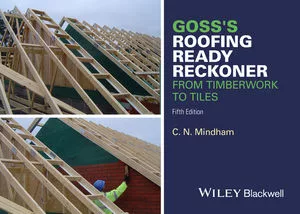Selling Attic Ventilation to Homeowners
What’s a residential roofing contractor to do if he knows his potential customer’s attic needs better ventilation (or ventilation period!) but the homeowner disagrees? What if the contractor’s proposal to replace the roof and improve the attic ventilation puts his price tag significantly above the other estimates in the homeowner’s hand? And what if the homeowner is willing to pay for the improved attic ventilation but challenges the roofer’s proposed game plan for venting the attic?
If you’re thinking, “Run away,” that’s not too far down the list, actually. But there are a few strategic steps roofing contractors can take before giving up on the project (and the homeowner).
Since 1998, Air Vent has been presenting “Attic Ventilation: Ask the Expert™” seminars free for roofing professionals throughout North America each first quarter. The program has evolved into a forum for sharing best practices. We polled a select group of attendees for their attic ventilation homeowner presentation tips.
The Critical First Five Minutes
The best way to reduce a homeowner’s concern about your proposal — while simultaneously boosting the person’s confidence in you — is to be thorough shortly after, “Hello.”
“Taking the time to fully engage the homeowner within the first five minutes is key,” said Jeff Heitzenrater, vice president of operations, Triple Peaks Roofing & Construction Inc. in Westlake, Ohio. “Tell them that you need to diagnose their home and that you’ll be conducting a free attic/roof inspection. Sit down with them and show them the results of your findings through photos, videos and brochures. You simply have to show them the black and white of proper attic ventilation.”
“I walk them through my proposal step by step — from setup to tear off to the installation of each product I am recommending for the project,” agreed Anthony Davis, owner, All Sound Roofing Inc. in Arlington, Wash. “If I’m not there a minimum of 45 minutes, I’m not doing my job. The key is to know the products you’re about to install and speak confidently about them.”
“If you can explain upfront the value and benefits of the new attic ventilation system you’re proposing in comparison to the system they currently have, the homeowner will likely understand,” explained Sean Jegen, owner, Gorilla Exteriors Contracting LLC in Shawnee, Kan.
Prevention Through Anticipation
Some contractors beat the homeowner to the attic ventilation objection through anticipation.
“I always try to anticipate potential objections before they arise and eliminate them,” said Pete Curtis, owner, Mountain Peak Home Improvement in Council Bluffs, Iowa. He does this through a detailed, thorough routine in which he shares with the homeowner his: professional license; proof of insurance; proof of being bonded (which the homeowner will fall back on should a contractor fail to complete the project); accreditations (for example, Curtis provides proof he passed the International Code Council Exam in the precise area of expertise for which the homeowner is considering hiring him); before and after photos of other projects he’s completed (especially ones that highlight improved attic ventilation); and third-party certificates (Curtis shows homeowners his Ask the Expert Seminar Certificate of Completion from Air Vent, for example).
“I have focused every step of the way on the needs, wants and benefits of and for the homeowner with this approach,” Curtis explained. “Knowing the contractor is experienced and qualified is extremely important. Knowing the contractor keeps up with new products and techniques as well as code changes is also huge. But the thing that gets me the job with little homeowner resistance is showing that I really care about the homeowners, their house and their long-term enjoyment of a beautiful roof which will last decades.”
Give Them a Visual
Pictures say a thousand words. That’s why Sam Rosario, president, Liberty Construction Inc. in Worcester, Mass., likes to give homeowners a visual when they question his approach to venting an attic, including his vent product selection and placement on the roof. To help explain how a balanced attic ventilation system requires both exhaust vents and intake vents, he uses the simple analogy of a straw.
“Have you ever used a straw to drink? A straw has a hole at the bottom and one at the top. If you block the hole at the bottom of the straw, will the straw work?” Rosario asks homeowners. And to drive home the point that he plans to block off all other existing attic exhaust vents before installing a ridge vent — thereby eliminating the possibility of short-circuiting the ventilation system — Rosario returns to the straw analogy. “If you poke a hole on the side of a straw, will it still work effectively? No. That’s why your gable louvers must be closed in order to make your ridge vent work properly,” he said.
Many contractors take full advantage of the educational tools and resources specifically designed to help them present to homeowners. Jeff Barnett is one of them.
“Knowledge is power. The literature, support tools and educational seminars Air Vent has offered across the country are a great way to educate you on proper installation of both intake and exhaust ventilation applications,” said Barnett, sales manager, Barnett Roofing & Siding Inc. in Canton, Mich.
Be Flexible While Staying Firm
Sometimes homeowners insist they know better than the roofing contractor and are either unwilling to pay his asking price or insist he change his proposed approach to the project.
“When this happens, it’s usually due to bad information the homeowner gathered from another source,” said Jake Jacobson, vice president, SF5 Constructions of Little Elm, Texas. “I’ll do my best to correct the misinformation. However, the customer may have a justifiable reason why he disagrees. And if he is adamant, we’ll seek alternate solutions that we can both agree upon.”
Jacobson requests an apples-to-apples comparison if the homeowner questions his higher price. “What exactly is the other roofer proposing and at what cost? Compare that to my proposal,” he says to homeowners.
Jegen has made adjustments to his original proposals. “If necessary, I’ll make changes to my estimate to fit the homeowner’s wants and needs while still obtaining proper attic ventilation,” he said.
“We may tell the homeowner we can lower the cost with a different shingle or underlayment but will not budge on the ventilation,” added Heitzenrater. “We tell homeowners that all roofing systems must have proper ventilation or they will probably be doing the roof again prematurely.”
Walk Away
But if common ground cannot be found, a difficult decision may have to be made by the roofing contractor: walk away.
“I can’t do the project if I can’t warrant or stand behind it,” said Stan Robinson, owner, Pacific West Roofing in Tualatin, Ore. “We will simply walk away kindly. Homeowners understand if I can’t put my name on the project and sign off that this is a ‘Pacific West Roof;’ they understand the magnitude of the statement. I tell homeowners it will cost more to fix this roof in 10 years, and they could be responsible for it after the sale of the house down the road because they didn’t properly address attic ventilation. If we can’t guarantee it, we don’t want the project.”
It’s not easy, but it’s sometimes necessary to draw a line in the sand.
“If the homeowner does not agree with our approach, we will agree to disagree and part as friends,” said Barnett. “There is too much liability to let the homeowner dictate what the proper way to ventilate their attic cavity is.”
“If the homeowner knows more than me, disagrees with my suggestions and does not agree with my approach, then they will not be a customer,” agreed Rosario.
“Sometimes we decide to just not do the work so we can protect our reputation in the industry,” explained Jason Avery, owner, Lakefront Roofing & Exteriors in South Haven, Mich. “At other times, we have an attic ventilation waiver signed by the homeowner. The waiver is to protect us from a homeowner saying down the road we neglected to explain the importance of proper attic ventilation.”
Many times presenting the waiver to homeowners gets them to see the light and agree to the project as detailed by the contractor — at his price point.
“Always be fair, honest and listen to what the needs of the homeowner are,” Avery said. “Then educate them on every aspect of what you are going to do. Most homeowners don’t fully understand their total needs, and it’s up to us — the professionals — to educate them.”
Looking for a reprint of this article?
From high-res PDFs to custom plaques, order your copy today!




.webp?height=200&t=1634866502&width=200)
.webp?height=200&t=1628274832&width=200)

